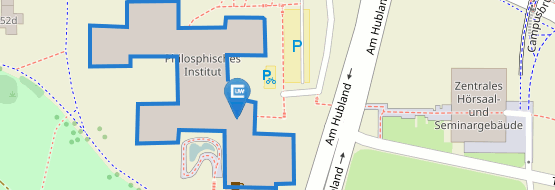Illustrations
Kūṭiyāṭṭam – ›combined acting‹, ›acting together‹, ›inter-play‹
Illustration 1a: Kalyāṇasaugandhikam, Tirunakkara kūttampalam (Kōṭṭayam), Ammannūr Cāccu Cākyār Smāraka Gurukulam, 08.12.1996 [photo: Moser I.96.29-37]
Illustration 1b: Nāgānandam [1957], [photo is taken from: K. P. Nārāyaṇappiṣārōṭi: »Nāgānandaṃ kūṭiyāṭṭam«.
In: Mātṛbhūmi āḻcappatippu, 27.10.1957, p. 25]
Illustration 1c: Śūrpaṇakhāṅkam: Rāma (Śivan Nampūtiri) and Sīta (Mārgi Sati) [original: Kuñju Vāsudēvan, collection Moser]
Kūttampalam – traditional theatre halls in Kerala temples
Illustration 2a: Exterior view of the kūttampalam of Vaṭakkunāthan temple, Tṛśśūr, 1995 [photo: Moser I.95.5-31a]
Illsutration 2b: Exterior view of the kūttampalam of Peruvanam temple, Peruvanam, 20.08.1995 [photo: Moser I.95.1-34a]
Illustration 2c: Exterior view of the kūttampalam of Tirumaṇḍāṅkunnu Bhagavati Kṣētram, Aṅṅāṭipuṟam, 26./27.3.96 [photo: Moser I.96.02-17]
Illustration 2d: Interior view of the kūttampalam of Peruvanam temple, Peruvanam, 20.08.1995 [photo: Moser I.95.4-32]
Illustration 2e: Uṣa Naṅnyār performing Naṅṅyār-Kūttu in the kūttampalam of Vaṭakkunāthan temple, Tṛśśūr, 17.08.1995 [photo: Moser I.95.8-13a]
Illustration 2f: Ammannūr Paramēśvara Cākyār in the role of the Sūtradhāran, performing in the kūttampalam of Tirumaṇḍāṅkunnu˘ Bhagavati Kṣētram, Aṅṅāṭipuṟam, 1996 [photo: Moser I.96.02-03]
Heike Moser performing Kūṭiyāṭṭam (stage debut as first foreigner in 1995)
Nirvahaṇam and Naṅṅyār-Kūttu
![4 - Nirvahaṇam – insertion of flashbacks in Kūṭiyāṭṭam
[graph: Moser]](/fileadmin/_processed_/7/6/csm_Moser_WP_4_d155cd06bf.jpg)
![5 - Naṅṅyār-Kūttu
Uṣa Naṅnyār performing Naṅṅyār-Kūttu in the kūttampalam of Vaṭakkunāthan temple,
Tṛśśūr, 17.08.1995 (Tāḷam: Aparṇṇa Naṅṅyār, Miḻāvu: Nārāyaṇa Nampyār)
[photo: Moser I.95.8-12a]](/fileadmin/_processed_/6/e/csm_Moser_WP_5_08de8d5705.jpg)
The Nampyār-/Naṅṅyār-family of Ēṭanāṭṭu˘
(Taṅkam Naṅṅyār and Sarōjini Naṅṅyār are sisters)
Illustration 6a: Taṅkam Naṅṅyār, performing Naṅṅyār-Kūttu at Mārgi, Tiruvanantapuram, 14.07.1995, using the old makeup: Her face is coloured deep red and surrounded by a black line; the »cap« is made of cardboard, covered with red cloth, silver ornaments and fresh flowers. The reformed makeup has omitted the black line, the face is bright yellowish; the headgear and the ornaments are mode of wood on a permanent base (standard since about 1984; see illustrations 1c, 3a, 3b, 5 and film clip 2). [photo: P.L. Shaji, collection Moser I.95.23-24(neg)]
Illustration 6b: Taṅkam Naṅṅyār, demonstrating Naṅṅyār-Kūttu at her house in Ēṭanāṭu, 10.08.1996, again using the old makeup and ornaments. [photo: Moser I.96.10-02]
Illustration 6c: Taṅkam Naṅṅyār, demonstrating Naṅṅyār-Kūttu at her house in Ēṭanāṭu, 10.08.1996 (on her left: Heike Moser, right: Uṣa Naṅnyār), showing not only the traditional makeup, but also the old type of costume: it is without blouse and just a cloth covering the legs – similar to the one, the male characters wear (open in front with a kind of wrap-over trousers underneath); rice-paste covers the upper arm, legs and feet. The modern costume uses long trousers and a kind of long, wide, entirely closed skirt, allowing the women more movements and jumps without daring glimpses (standard since about 1984; see illustrations 1c, 3a, 3b, 5 and film clip 2). [photo: Moser I.96.10-19]
Illustration 6d: Sarōjini Naṅṅyār, performing Naṅṅyār-Kūttu at Aṅṅāṭipuram, 27.03.1996, using the old makeup and ornaments but the modernised, closed skirt (see film clip 1) [photo: Moser I.96.2-11(dia)]
Illustration 6e: Sarōjini Naṅṅyār, performing Naṅṅyār-Kūttu at Tṛppūṇittuṟa, 31.08.1995, showing the old makeup and ornaments [photo: Moser I.95.06-06]
Illustration 6f: Sarōjini Naṅṅyārs son Nārāyana Nampyār with her father (his grandfather) Viluvaṭṭattu Rāvuṇṇi Nampyār – both experts of the miḻāvu-drum, played exclusively for Kūṭiyāṭṭam, 1996 [photo: Moser I.96.19-24]
Red eyes, caused by inserting the premature seed of the cuṇṭapūvu-flower
![Illustration 7 - Kalāmaṇḍalam Rāma Cākyār as Bhrāntan in Mantrāṅkam,
performed at Paḷuṅkil Śivanārāyaṇakṣētram, Kiḷḷimaṅgalam, 26.05.1996
[photo: Moser I.96.09-07]](/fileadmin/_processed_/3/b/csm_Moser_WP_7_a9efbce1e4.jpg)
Interview with Viluvaṭṭattu ›Subhadra‹ (Pārvati) Naṅṅyār
Kūṭiyāṭṭam and Naṅṅyār-Kūttu in new public spheres (20th/21st centuries)
Illustration 9a: Paiṅkuḷam Rāma Cākyār, Māṇi Mādhava Cākyār, Ammannūr Mādhava Cākyār – the »trinity of Kūṭiyāṭṭam« [original: V.T. Induchudan (Ceṟuturutti), collection Moser]
Illustration 9b: Paiṅkuḷam Rāma Cākyār as Vidūṣaka in Subhadrādhanañjayam, act 1, Kūṭalōṯṯupurttumana temple, 1979 [original: Krishna Nair Studio (Ṣoṟaṇūr), collection Moser]
Illustration 9c: Paiṅkuḷam Rāma Cākyār as Arjuna-Dhanañjayan in Subhadrādhanañjayam, act 1 [original: Krishna Nair Studio (Ṣoṟaṇūr), collection Moser]
Illustration 9d: Māṇi Mādhava Cākyār, his daughter Amminikuṭṭia and his son (?), performing Subhadrādhanañjayam at Lucknow, 1964 [original: P.K. Nārāyaṇa Nampyār (Kiḷḷikkuṟuśśimaṅgalam), collection Moser I.2000.05-03a(neg)]
Illustration 9e: The first Kūtiyāttam-tour abroad: Paris 1980 [original: Śivan Nampūtiri, collection Moser]
Illustration 9f: The first Kūtiyāttam-tour abroad: Jaṭāyuvadham at Paris 1980 (Rāvaṇa: Kalāmaṇḍalam Śivan Nampūtiri, Jaṭāyu: Kalāmaṇḍalam Rāma Cākyār, Miḻāvu: Kṛṣnan Nampyār and P.K. Nārāyaṇa Nampyār) [original: Gilles Tarabout (Paris), collection Moser]
Illustration 9g: Kalāmaṇḍalam Śivan Nampūtiri, showing the gesture for Garuḍa [original: V.T. Induchudan (Ceṟuturutti), collection Moser]
Illustration 9h: Kalāmaṇḍalam Śivan Nampūtiri as Arjuna-Dhanañjayan in Subhadrādhanañjayam (acting ›playing the vīṇā‹) [original: P.N. Girija (Ceṟuturutti), collection Moser]
Illustration 9i: First performance of an episode of Naṅṅyār-Kūttu on a secular stage and first performance of an episode of Naṅṅyār-Kūttu by a non- Naṅṅyār: P.N. Girija shows Vṛndāvanavarṇṇanam (here: Mayilāṭṭam) in December 1984 in the kūttampalam of Kēraḷa Kalāmaṇḍalam [original: Krishna Nair Studio (Ṣoṟaṇūr), collection Moser]
Illustration 9j: Kalāmaṇḍalam Sōphi was the first woman to perform a male role on stage in Kūṭiyāṭṭam (Sūtan / Māyā-Lakṣmaṇa in Jaṭāyuvadham, Kēraḷa Kalāmaṇḍalam), 09.11.1995 [photo: Moser I.95.19-4a]
Illustration 9k: Kapila G. Vēṇu shows the new piece »Narasiṃhāvatāram« in Naṅṅẏār-Kūttu style; the main technical innovations are that she recites the text herself and that she shows her tongue on stage when portraying Narasiṃha (ITFoK'09 – Afro-Asian theatre festival, Tṛśśūr, 21.12.2009) [photo: Moser P1000182.JPG]











![3a - Araṅṅēṯṯam of the author (Heike Moser) performing Naṅṅyār-Kūttu in the kūttampalam of her school,
Kēraḷa Kalāmaṇḍalam, 18.09.1995
[photo: Kuñju Vāsudēvan, collection Moser I.95.09-04]](/fileadmin/_processed_/b/a/csm_Moser_WP_3a_6c7be6419d.jpg)
![3b - Heike Moser in the role of Laḷita in Śūrpaṇakhāṅkam at Paḷuṅkil Śivanārāyaṇakṣētram,
Kiḷḷimaṅgalam, 01.01.1996
[photo: M. N. Nārāyaṇan, collection Moser I.96.01-11(neg)]](/fileadmin/_processed_/e/f/csm_Moser_WP_3b_735ed30c90.jpg)






![Illustration 8 - by Uṣa Naṅṅyār and Heike Moser at her house in Iriññālakuṭa, 23.09.1995 (see film clip 3)
[photo: Moser I.95.13-30]](/fileadmin/_processed_/5/9/csm_Moser_WP_8_0bd4cf89a0.jpg)











